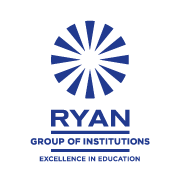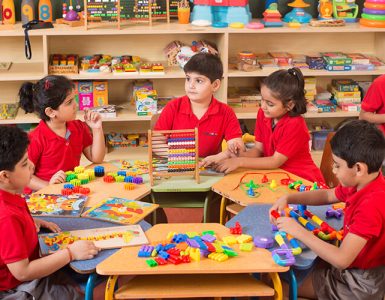In our relentless pursuit of academic excellence, one facet often overlooked is the nurturing of emotional intelligence within the landscape of early child hood education. The concept of Social Emotional Learning assumes a vital role in cultivating empathy and compassion within our children, rendering it an essential part of their development.
The Architecture of Empathy and Compassion
The emotional resonance with others’ feelings constitutes the crux of kindness. Understanding the emotional world of others fosters a connection that transcends mere cognitive comprehension. As children become adept in recognizing and managing their emotions, they pave the way for compassionate interactions and mindful conflict resolution. Social Emotional Learning (SEL) is a robust method that synergizes traditional academic pursuits with the essential emotional growth required to shape balanced, humane, and responsive individuals. Certain Indian educational initiatives, such as the Happiness Curriculum, equip children with an understanding of emotions, relationships, and ethical considerations, thereby nurturing empathy.
Mahatma Gandhi’s words “The best way to find yourself is to lose yourself in the service of others,” resonate profoundly with Social Emotional Learning, emphasizing the eternal relevance of compassion. Kindness transcends contemporary psychological constructs, finding profound resonance in ancient Indian philosophical traditions and modern ethics.
The Ethical Compass of Kindness
Encouraging children to embrace compassion and empathy lays the foundation for shaping morally upright citizens. Guiding young minds to decisions based on ethical principles fosters a lifelong adherence to virtues like kindness and parents and educators are instrumental in translating these principles into lived realities, not merely through words but demonstrative actions.
Did you know research indicates a link between early education in kindness and subsequent success in various life domains. This exploration into the theoretical foundations of kindness showcases the intricate relationship between psychology, philosophy, and the tangible practices within the sphere of K-12 education. Social Emotional Learning, far from being a mere academic term, offers a practical pathway towards nurturing compassionate, responsible citizens.
Cultivating Kindness through Practice and Insight
In the labyrinth of academic pursuits, the essence of empathy and compassion often remains obscured. Social Emotional Learning emerges as a beacon guiding our children toward a path of kindness, understanding, and compassion. Every child is a unique entity with distinct emotional needs. Tailoring the educational experience helps resonate with these individual attributes. By weaving the fabric of community into the educational process, a sense of belonging and shared responsibility is nurtured. The classroom metamorphoses into a sanctuary where theory merges with practice, enabling the young minds to grasp the subtleties of empathy.
Collaboration as an Empathy Builder
Working together fosters respect and appreciation for diverse viewpoints, an essential step towards developing empathy. Integrating ethical values within the curriculum ensures that moral development is not a mere appendage but an integral aspect of learning. Literature and arts unlocks the door to an emotional universe, providing avenues for children to explore empathy and compassion. Literature offers children the ability to traverse diverse emotional landscapes, forging a deeper connection with empathy. Encouraging artistic pursuits enables children to delve into their emotions, facilitating emotional growth. Parents, in their capacity as primary caregivers, play an instrumental role in nurturing kindness at home, thus complementing the educational environment. Engaging children in open conversations fortifies the ethical lessons imbibed at school. Parents who embody kindness in their daily lives weave a living tapestry of compassion for their children to emulate.
Technology: A Modern Ally
The digital realm offers an innovative platform to extend the principles of Social Emotional Learning beyond the conventional boundaries. Utilizing online platforms to foster empathy makes learning an engaging experience, like virtual community engagements and empathy-centric games bridge the theoretical and practical aspects of kindness.
Embracing Cultural Diversity
In a land marked by cultural plurality, embracing diversity ensures that the teachings of kindness resonate with the rich tapestry of local traditions. Acknowledging cultural values enhances the relevance and acceptance of empathy-driven education.
As Tagore said
Love’s gift cannot be given; it waits to be accepted,” echo the universality of empathy, transcending cultural divides.
In this part, the practicalities of translating theoretical kindness into tangible practices have been explored. Through a rich blend of classroom strategies, parental guidance, technological integration, and cultural nuances, Social Emotional Learning stands revealed as an actionable tool.
The Long-term Impact of Kindness in Child Development
Kindness, beyond an ephemeral expression, constitutes an essential pillar of moral development in children. The cultivation of this virtue extends far beyond the confines of K-12 education. The imbibing of kindness within the early stages of development has repercussions that last a lifetime. Kindness enriches not only the emotional realm but contributes significantly to cognitive growth and social well-being.
Emotional Resilience: A Byproduct of Kindness
Emotional resilience, a crucial trait in an ever-changing world, finds its roots in the nurturing of kindness. Teaching kindness fosters emotional connectivity with peers, family, and community, creating emotionally resilient individuals. In Indian schooling systems emphasizing empathy and compassion have witnessed improved peer relationships and emotional well-being in children.
Kindness and Academic Success: A Symbiotic Relationship
The nurturing of kindness is not an isolated endeavor but deeply intertwined with academic success. A classroom imbued with empathy and compassion creates a conducive atmosphere for learning. Studies have demonstrated that kindness and empathy play a pivotal role in enhancing problem-solving abilities and critical thinking.
The Role of Parents and Teachers: A Joint Endeavor
The responsibility of nurturing kindness is a joint endeavor, where parents and teachers function as twin pillars. Harmonizing the teachings of kindness at school and home creates a consistent message, reinforcing its importance.
As Nelson Mandela wisely said, “Education is the most powerful weapon which you can use to change the world.” This epitomizes the transformative power of an education imbued with kindness.
The Collective Responsibility
Cultivating kindness is not the sole responsibility of educational institutions. It requires a concerted effort from educators, parents, and the community at large. Parents are encouraged to take an active interest in their children’s emotional growth, reinforcing the teachings of empathy and compassion. Collaboration between parents and schools in supporting initiatives that emphasize Social Emotional Learning creates a nurturing environment.
Kindness as a Way of Life
The deliberate cultivation of kindness in young children, deeply rooted in theories related to emotional intelligence, empathy, and moral development, transcends the boundaries of mere education. It becomes a way of life, shaping the future citizens of our world. Encouraging our children to live by the principles of empathy and compassion creates a legacy of kindness, enriching their lives and the lives of those around them. By understanding, nurturing, and practicing kindness, we make strides toward a more compassionate society.




